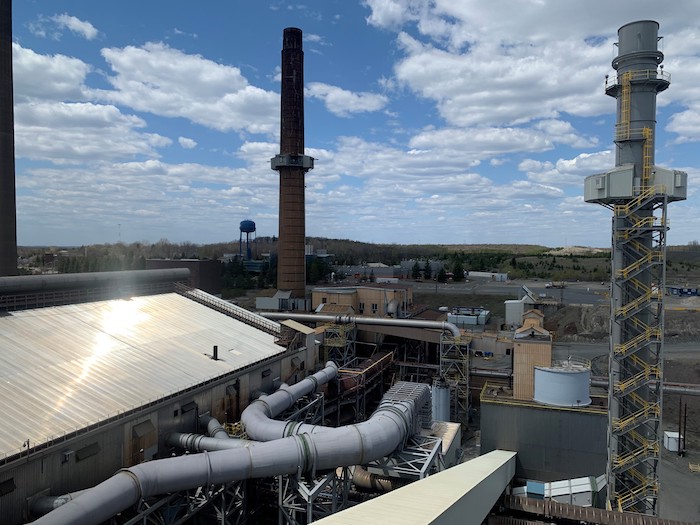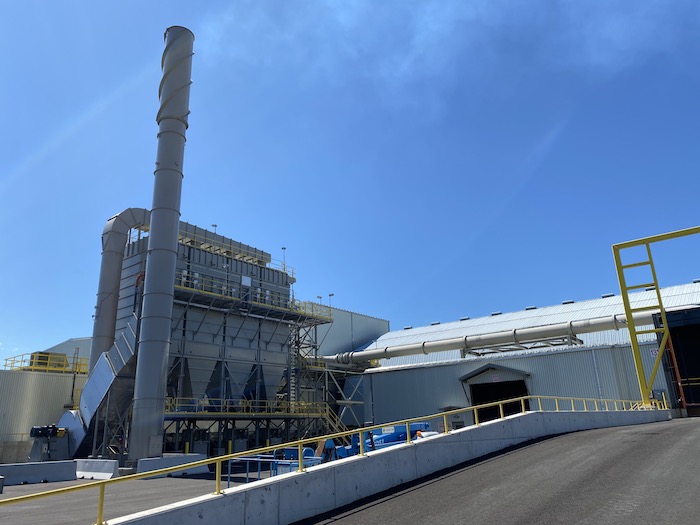
2022 #CCEawards Showcase: Process Gas Project and Particulate Emissions Project
November 10, 2022
By CCE
“An extensive menu of process improvements were made throughout the plant to achieve reductions.” – Jury
Category: Project Management
Award of Excellence Winner: Hatch
The Process Gas Project (PGP) and the Particulate Emissions Project (PEP) represent a $288-million investment by Glencore to reduce sulfur dioxide (SO2) and particulate emissions and improve productivity at its Sudbury smelter. Both projects are critical to the long-term viability of the company’s integrated nickel operation (INO) in Sudbury, Ont.
Hatch was engaged to respond to government-mandated SO2 and emissions-reduction requirements, providing full engineering, procurement and construction management (EPCM) services for process upgrades.
Major upgrades
These projects were complex brownfield executions that involved modifying virtually every major smelter process while maintaining 24-hour-per-day operations.
The upgrades included:
- Expanded nickel concentrate receiving and handling facilities, bringing operations were indoors with ventilated dust control systems to eliminate particulate emissions.
- An upgraded concentrate thawing facility.
- Improved feed slurry preparation facilities, including blending tanks and mixer, to allow a uniform feed profile, reducing spikes in sulfur and emissions.
- Upgraded capacity for fluid bed roaster offgas systems, increasing sulfur removal from the calcine.
- Debottlenecking the acid plant to allow processing of increased sulfur dioxide in the roaster off-gas.
- Implementation of a controlled furnace atmosphere (CFA) to control oxygen levels in the electric furnace freeboard by injecting low-oxygen acid plant tail gas to reduce SO2 formation.
- A hybrid converter vessel and associated feed infrastructure, increasing efficiency for the converter aisle and reducing emissions from ladle transfer operations.
- A system to continuously inject combustion air into the furnace uptakes to improve safety during occasional high carbon monoxide (CO) concentrations.
- A secondary ventilation system in the converter aisle, including fume capture hoods with moving doors to collect emissions from converter charging and pouring.
Hatch tapped global expertise to support the Sudbury execution team with specialized material handling flow modelling, acid plant design, electric furnace design, computational fluid dynamics (CFD) modelling, noise abatement, process gas handling design and machine design.
An industry first
The CFA system was an industry first. No other engineering consultant had attempted to tie tail gas from an acid plant into an electric furnace before. The concept was first proven by injecting nitrogen gas into the operating furnace as a full-scale test.
The design required improved freeboard pressure control, fast isolation dampers to shut off tail gas flow in an emergency, 12 injection points around the furnace to ensure uniform coverage (designed using CFD modelling), dampers at injection points to allow flow distribution to be modified during operation, stainless steel sloped ductwork to prevent corrosion and drain tail gas sludge, precise duct construction to contain positive-pressure tail gas near personnel areas and accurate and verifiable instrumentation to ensure proper monitoring.
The system both reduced SO2 formation and significantly improved furnace temperature control.

Design development and execution were carefully staged over 11 years, in three implementation phases. Photo courtesy Hatch.
Addressing challenges
Meticulous implementation planning ensured critical tie-ins could be made during short, planned shutdown windows. This approach required close co-ordination between Hatch’s construction team and Glencore’s operators.
The projects’ complexity necessitated hundreds of equipment and contract packages and tens of thousands of deliverables. Hatch’s management systems facilitated effective and efficient review, record keeping and problem resolution.
Ground conditions were frequently poor, due to historical site use. Thorough geotechnical investigations, cost estimates and foundation designs were needed to ensure success.
Equipment layout was significantly complicated by the brownfield environment and required a high degree of field presence, including a full-time team on-site daily that facilitated quick resolution of issues.
The following factors contributed to the projects’ success:
- Safety practices were rigorously enforced from the beginning.
- Design development and execution were carefully staged over 11 years, in three implementation phases.
- An integrated team was formed between Glencore and Hatch, with clear responsibility for package execution and costs, to co-ordinate construction in an operating plant. Continuity of this model was maintained throughout the projects.
- Continuous improvement, lessons learned and value improvement practices were implemented through all phases, reducing costs (the projects were brought in 16% under budget) and achieving a better outcome.
- Equipment and material selection was based primarily on quality, not price.
- Realistic budgets and schedules were derived from a thorough feasibility study.
- Work was carefully planned, so short outages—even a few hours—could be efficiently used for tie-ins in the operating plant.
- Contract bid packages were well-defined and issued with construction-ready drawings and final documentation, minimizing cost adders.
- Shop inspections of equipment packages were completed before delivery to ensure quality.
- Regular computer-aided design (CAD) model reviews with stakeholders were completed to ensure technical alignment.
Environmental improvements
The PGP reduced SO2, cadmium, nickel and cobalt measured in the community by 50% to 65%, total SO2 emissions from 40,000 to 26,000 t per annum and SO2 emission intensity from 0.45 to 0.3 t per t Ni + Cu. To address energy efficiency, the project invested in variable frequency drives (VFDs) for new and some existing process ventilation systems.
The project also included efforts to minimize noise. Where one of the largest fans Hatch has ever incorporated on a project needed to be installed close to the property line with the community, for example, the project incorporated control measures, including a specially designed building to mitigate noise impacts below nighttime limits.
The Sudbury INO is a major employer in the region. Complying with environmental regulations was essential to keeping the facility viable for the community. The improved emission abatement has resulted in fewer periods during which the facility needs to curtail production due to weather conditions that would otherwise contribute to elevated contaminant concentrations. In this way, the project has also improved the economic performance of the facility.
Process Gas Project and Particulate Emissions Project, Sudbury, Ont.
Award-winning firm (engineering, procurement and construction management): Hatch, Sudbury, Ont. (Keith Joiner, P.Eng.; Ben Paillé, P.Eng.; Gary Norvall, FIEAust CP Eng, MBA; Josh Lilley, P.Eng.; Aaron Clackett, P.Eng.; Gio Cortolezzis; Mike Lesk, CET; Megan Giroux; Jean Halle; Laura Depatie).
Owner: Sudbury Integrated Nickel Operations (a Glencore company).
Other key players: Space-Ray (gas-fired products), Advanced Integrated Resources (baghouses), Jeamar (primary and secondary hood door drives), Chemetics (cross-flow stripper), Lopes (ductwork), TESC (ductwork), Anmar (ductwork).
